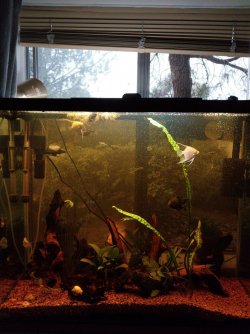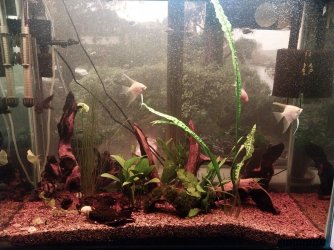Pictus
New Member
I have a 75 gallon tank. I put in a bunch of driftwood and now my water is quite brown in color. I don't really mind the coloration because I like the natural look of it but I am concerned about my plants not getting enough light. Does brown colored water block the light from getting to my plants? My tank is 36" long and 30" deep. I have one 30" fluval plant light and one off brand 15", both led. They are set on timers for 12 hours of light. Also my tank is in front of a window. I have had this tank for about two months and my plants don't seem to be thriving. They kinda look like they are just hanging on. I am using aquarium co-op plant fertilizer for the past 3 weeks and have seen a small improvement. I have tried to post photos but I do not think it is possible using a cell phone.





